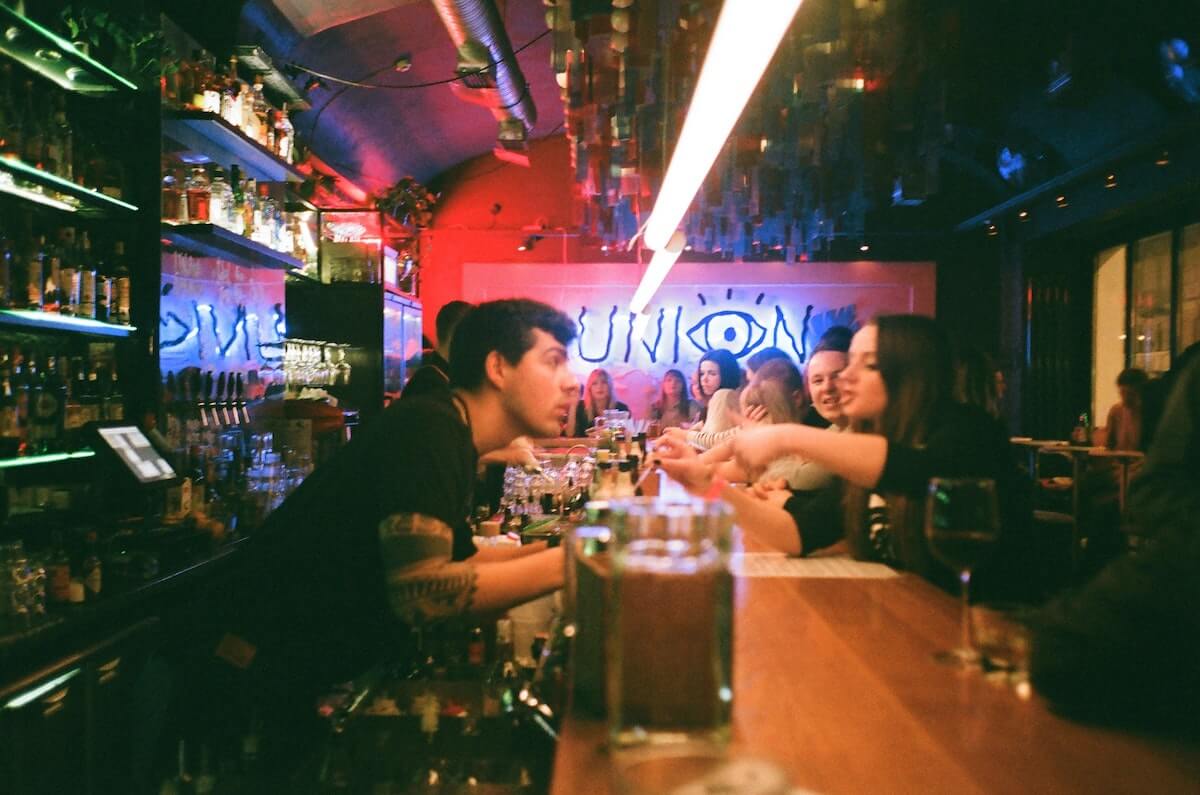Bar management tips for beginners
Skip the article and turn takeaways into action by scheduling a call with our team.
Bar management can be both exhilarating and exhausting. The bar business is not for the faint of heart, but a successful bar can be both an economic and social boon to its owner, as well as a mainstay of the local community’s social life.
Even in the simplest establishment, there are a lot of bar operations to keep track of: inventory, benchmarks, profit margin, and so on. A good bar manager or bar owner will be able to track most or all of these moving parts (with the support of staff members, of course). And although there is some significant crossover with the restaurant industry in that they both fall under the broader category of the hospitality industry, the bar business is really its own ball game.
So, we’re here today to discuss bar management tips—from beverage management to budgeting, social media, and more.
4 bar management tips to run a thriving watering hole

1. Let your style define your beverage management
One of the most important steps in the creation of any bar is deciding just what kind of bar the establishment will be. The options are endless: a dive bar, a pub, a wine bar, a mixology haven, and so on. Before you begin considering how to manage your beverages, your bar needs to have its brand identity sorted out. Once the bar’s identity is firmly established—step zero, essentially—beverage management is the next step.
In restaurant management, food menu items define the restaurant. In the same way, beverages define a bar. In general, there are two golden rules to beverage management:
- Have a wide enough selection to satisfy your customers
- Keep enough of said beverages on hand to not run out
Beverage management offers a very broad canvas on which to paint your bar’s identity, but you pave the path to success by making sure you keep customers happy and keep the drinks flowing.
Let’s take two opposing examples: a dive bar and an upper-crust mixology establishment. The beverage needs between the two will be very different. The dive bar will need to ensure it has ample cold beer—with a range of several to perhaps a dozen or more beers, as well as a standard assortment of liquor. Volume is more important than variety in such an establishment—you won’t likely need more than a few types of whiskey or wine, for example.
A mixology establishment will have a much more complicated supply chain, as variety and novelty are the keys to a successful cocktail bar. Quality will be the most important concern of beverage management rather than volume. You may not use much Lillet Blanc or Chartreuse in making cocktails, but having such luxury liquors is a must if you want to compete with the best cocktail bars around.
2. Dial your inventory management
The previous note segues nicely into inventory management—a crucial aspect of hospitality management of any variety, but especially in the bar business.
Inventory management needs to be viewed in three main categories: beer, wine, and liquor. The simplest is liquor, which is where we’ll start.
The only constraint on how much liquor inventory a bar should have is its physical storage space. In general, a large liquor inventory is only a net positive. Liquor does not need to be refrigerated and it never goes bad. Really, liquor is a bar manager’s best friend.
Beer and wine need more consideration than liquor in storage. Over-purchasing beer can lead to a storage crisis, since beer needs to be kept cold—so bar staff need to keep close tabs on beer volume, and the distributor needs to be on speed dial.
Wine needs to be kept at a regular temperature but is not as fussy to store as beer. As long as its storage space is relatively cool and dry, most wine can last essentially forever—and in general gains value as it ages. There are of course exceptions to this rule, like Beaujolais, but if you know enough to be serving a variety of wines you likely know this.
So, again, the challenge in inventory management depends entirely on the style of your bar. A beer-focused dive bar needs to hustle a lot of beer in and out of their taps or refrigerators while a wine or cocktail bar simply needs to make sure they have enough inventory in store to get them through service.
3. Go against traditional restaurant menu pricing

Conventional wisdom in the hospitality industry suggests that menu items should reflect 3x the cost of the item. If you’re lost for better ideas or simply not sure what to do with a specific item, that’s a good place to start.
But bars specifically have more flexibility with these types of budgeting issues for a few reasons:
- You don’t make your own liquor, wine, or (usually) beer
- Serving alcohol requires much less preparation and time than serving food
- Customers will likely order more than one beverage, whereas they’d be unlikely to order the same dish twice
What this means is that the 3x model can be fudged towards the downside. Lowering prices can lead to an increased volume of sales, which leads to a livelier bar, which attracts more patrons. This can create a virtuous cycle that eventually leads to a successful bar.
In my own experience as a pub owner, setting my costs for alcohol—most notably liquor—at prices 20-30% lower than my immediate competitors gave my establishment a significant edge and attracted lots of customers. Crucially, it got many customers to switch from beer to liquor, which often represents higher profit margins.
Why is that, you ask? Simple: The easiest profit a bar can possibly make is from selling shots. The bartender’s job is very easy, as it only requires pouring liquor into a glass. If the price is right, a customer will buy shots not only for themselves but for their friends or other patrons, too.
There’s a certain price tipping point in every location that determines whether price-sensitive customers stick to beer or switch to liquor. Ideally, a menu should steer customers toward liquor as much as possible.
Recall that liquor requires no special storage or preparation compared to beer and you’ll perhaps understand why I consistently insist that liquor should be one of the major focuses of any successful bar manager.
4. Prioritize friendliness over hardline budgets
Additionally, while many bar managers do everything they can to avoid overpouring, many customers appreciate a drink that’s a bit on the stiff side. If a mixed-drink-enjoying guest feels underserved, they’ll switch to beer, which means profit lost on liquor.
Similarly, generosity toward customers goes a long way. Giving free drinks to regulars, customers clearly on a date, or simply someone looking down can go a long way to building lasting bonds with customers. It’s through simple things like giving a drink on the house that real relationships are built, and it’s through these real relationships that businesses last and thrive. If people feel at home at a bar, they’ll come back—and bring their friends. Repeat customers are what really makes a profitable bar feasible.
Who makes a good bar manager?
A good bar manager can be anybody. While the bar manager job involves a lot of juggling, some number crunching, and plenty of inventory management, the top requirements are a strong work ethic and an outgoing personality. With those two baseline personality traits, anyone can be trained to be a successful bar manager. For many, it’s a viable career path, as centuries of pub owners in the UK and other countries can attest to.
Manage a better bar

If you’re running a busy bar, stepping back to crunch numbers is something you have to carve out time to do. Often, it’s a headache that you’d rather leave to someone else. Fortunately, software is racing into the future—like Yelp Guest Manager. Revitalize your bookings and reservations, waitlist management, table management, floor plans, and takeout orders for those who’d rather bring your craft cocktails home.
Curious to see how it works? Want to know what kind of improvements Yelp Guest Manager can make for your bar? Give us a shout and we’ll be happy to show you a free demo. Just like you might give out drinks on the house sometimes, this test drive is on us.